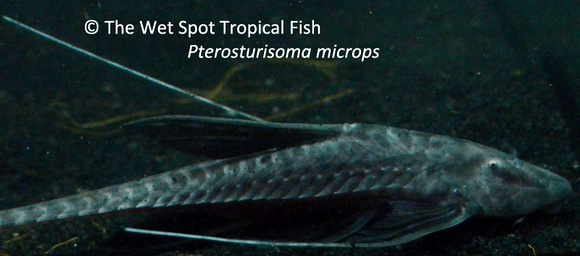July 4, 2014
July 04, 2014
•
Leave a Comment
Happy Fourth of July, folks! We’ll be trying out a couple small changes to the newsletter format and features; please let me know what you think. Now, we’ve received many new fish the past couple weeks and I’ve chosen a few to discuss this week. Remember, if you have any questions about our other recent acquisitions or long-time staples, don’t hesitate to ask! Astronotus ocellatus “Oscar” is quite common in the hobby, and we’ve been lucky enough to be able to offer both tank raised and wild specimens. At the moment we are really excited to be stocking wild-caught Astronotus crassipinnis “Big Eye Oscar”. This fish is rarely seen in the hobby and really does have large eyes, especially notable as we house them next to our wild A. ocellatus. This fish's rarity means that there isn’t a great amount of information on them. The Big Eye Oscar has reportedly been collected in Argentina, Bolivia, Paraguay, and Peru, specifically in the Paraguay drainage and Parana River Basin. The largest specimen caught in the wild was just over nine-ten inches in length. Unfortunately, for those of us who wish the Big Eye Oscar actually stayed this small for the sake of requiring less space, it is unknown if this is the full adult size. Their basic features such as body shape, finnage and coloration are very similar to the common Oscar, but the fish tend to be a bit more dark and olive than A. ocellatus at adulthood. Red coloration around the tail ocellata is just as visible, but little to no red is seen on the rest of the body. Most notable when comparing this fish side by side with its close cousin, however, is its larger eyes. For all intents and purposes, care of this fish should mimic that provided for the more common Oscar – a 55 gallon aquarium for one specimen should be provided, given its uncertain adult size, and water should be neutral to slightly acidic with temperatures in the mid to upper 70s Fahrenheit.
Moving on to the upper Amazon basin in northern Peru, we find a really fantastic Loricariid catfish, Pterosturisoma microps “Antenna Loricaria”. These are very similar to the Sturisoma, Lamontichthys and Farlowella species commonly known as the Twig Cats. Its snout is shorter than most twig cats but its tail is just as long and narrow. The outer rays of both their pectoral and caudal fins are greatly extended with the pectoral filaments already nearly half the size of their elongate bodies. Its armor-like scales are mottled black and dark grey-brown with a bit of light grey marbling – in contrast with the brownish dark patches, this marbling can appear almost blue. While exhibiting a small amount of sexual dimorphism in the markings on their bellies, breeding has never been reported in the home aquarium. These fish will grow to just over six inches in length, excluding their caudal fin and its extensions, and enjoys warm water from 76 to 82 degrees Fahrenheit. Keep the pH values neutral for the fish’s comfort and provide plenty of vegetable matter for this fish – blanched peas are said to be especially relished.
Finally, a fish just identified in 2006 in the Congo River Basin: Nanochromis teugelsi, formerly sp. “Kasai” for its type locality in the Democratic Republic of Congo. This absolutely beautiful fish is a golden fish with iridescent green coloration over the cheeks and flanks, pale pink bellies on the males, and red bars above their eyes. Their fins are golden and bordered in black and white or, in the case of the caudal fin, striped in yellow, black, and blue. Zero to three black spots may be evident in the male’s extended dorsal fin. Females are comparatively rotund with the typical iridescent purple belly coloration of their close West African cichlids. A large black spot dominates the dorsal fin. The upper lips of both males and females are colored brilliant orange. This fish has readily bred in the home aquarium. They are pair bonding cave spawners, as typical for their genus, and will care for their brood for from five to seven weeks. While specific water parameters are hard to find for this fish, their collection location is generally described as tropical blackwater conditions with plenty of plants and a sandy substrate. With that in mind, our wild-caught specimens are acclimated to our fairly soft, 7.5 pH water, but may be content in more acidic conditions.
Thank you for reading and, please, let me know what you think of our newsletter format changes. Additionally, I’d like to let you all know that we have resumed offering Saturday deliveries via UPS Next Day Air. Jessica Supalla
Keywords:
Newsletter
Comments
No comments posted.
Loading...
|



